Top Ten Animals You Would Like to Rate Most
What do you think of these animals? Are they pretty, beautiful, cute, cool, scary, ugly, etc? Butterflies are part of the class of insects in the order Lepidoptera, along with the moths. Adult butterflies have large, often brightly coloured wings, and conspicuous, fluttering flight.
Butterflies are part of the class of insects in the order Lepidoptera, along with the moths. Adult butterflies have large, often brightly coloured wings, and conspicuous, fluttering flight. 10/10 go pollinators! Simply beautiful.
8/10
Really pretty!
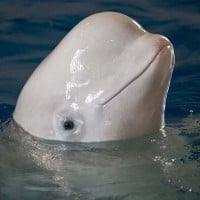 The beluga whale or white whale is an Arctic and sub-Arctic cetacean. It is one of two members of the family Monodontidae, along with the narwhal, and the only member of the genus Delphinapterus.
The beluga whale or white whale is an Arctic and sub-Arctic cetacean. It is one of two members of the family Monodontidae, along with the narwhal, and the only member of the genus Delphinapterus. 10/10, so friendly
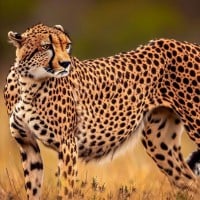 The cheetah (Acinonyx jubatus) is a large cat and native to Africa and central Iran. It is the fastest land animal, estimated to be capable of running at 80 to 128 km/h (50 to 80 mph) with the fastest reliably recorded speeds being 93 and 98 km/h (58 and 61 mph), and as such has several adaptations for speed, including a light build, long thin legs and a long tail. It typically reaches 67–94 cm (26–37 in) at the shoulder, and the head-and-body length is between 1.1 and 1.5 m (3 ft 7 in and 4 ft 11 in). Adults weigh between 21 and 72 kg (46 and 159 lb). Its head is small and rounded, and has a short snout and black tear-like facial streaks. The coat is typically tawny to creamy white or pale ...read more.
The cheetah (Acinonyx jubatus) is a large cat and native to Africa and central Iran. It is the fastest land animal, estimated to be capable of running at 80 to 128 km/h (50 to 80 mph) with the fastest reliably recorded speeds being 93 and 98 km/h (58 and 61 mph), and as such has several adaptations for speed, including a light build, long thin legs and a long tail. It typically reaches 67–94 cm (26–37 in) at the shoulder, and the head-and-body length is between 1.1 and 1.5 m (3 ft 7 in and 4 ft 11 in). Adults weigh between 21 and 72 kg (46 and 159 lb). Its head is small and rounded, and has a short snout and black tear-like facial streaks. The coat is typically tawny to creamy white or pale ...read more. 9/10 beautiful, strong and fast, sadly made into a kids kinda thing in the lion guard, put to shame on my opinion.
8/10 amazing animal, lovely body build and made for speed!
9/10
Adorable and super cool animals
20/20 This is a fast one.,
 The cat (Felis catus) is a domestic species of small carnivorous mammal.
The cat (Felis catus) is a domestic species of small carnivorous mammal.It is the only domesticated species in the family Felidae and is often referred to as the domestic cat to distinguish it from the wild members of the family. A cat can either be a house cat, a farm cat or a feral cat; the latter ranges freely and avoids human contact.
Domestic cats are valued by humans for companionship and their ability to kill rodents. About 60 cat breeds are recognized by various cat registries. ...read more.
 A dolphin is an aquatic mammal within the infraorder Cetacea. Dolphin species belong to the families Delphinidae (the oceanic dolphins), Platanistidae (the Indian river dolphins), Iniidae (the New World river dolphins), Pontoporiidae (the brackish dolphins), and the extinct Lipotidae (baiji or Chinese river dolphin). There are 40 extant species named as dolphins. ...read more.
A dolphin is an aquatic mammal within the infraorder Cetacea. Dolphin species belong to the families Delphinidae (the oceanic dolphins), Platanistidae (the Indian river dolphins), Iniidae (the New World river dolphins), Pontoporiidae (the brackish dolphins), and the extinct Lipotidae (baiji or Chinese river dolphin). There are 40 extant species named as dolphins. ...read more. 8/10 Long And beautiful, the dolphin is a gentle, sweet animal
10/10
Friendly, kind, funny, and intelligent animals
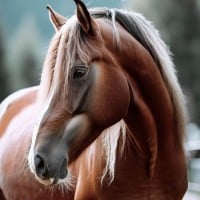 The horse is an odd-toed, hoofed mammal of the taxonomic family Equidae whose sole major subspecies (Equus ferus caballus) is a domesticate, although wild subspecies have survived into the modern period. All subspecies, including the two extant ones, descend from the Pleistocene Equus ferus. The horse has evolved over the past 45 to 55 million years from a small multi-toed creature, Eohippus, into the large, single-toed animal of today. Humans began domesticating horses around 4000 BC, and their domestication is believed to have been widespread by 3000 BC. Horses in the subspecies caballus are domesticated, although some domesticated populations live in the wild as feral horses. These feral ...read more.
The horse is an odd-toed, hoofed mammal of the taxonomic family Equidae whose sole major subspecies (Equus ferus caballus) is a domesticate, although wild subspecies have survived into the modern period. All subspecies, including the two extant ones, descend from the Pleistocene Equus ferus. The horse has evolved over the past 45 to 55 million years from a small multi-toed creature, Eohippus, into the large, single-toed animal of today. Humans began domesticating horses around 4000 BC, and their domestication is believed to have been widespread by 3000 BC. Horses in the subspecies caballus are domesticated, although some domesticated populations live in the wild as feral horses. These feral ...read more. 10/10 AMAZING! Fast, strong and magestic, have you seen them racing? WOW!
10/10
Super cool and majestic.
10/10. You can ride them
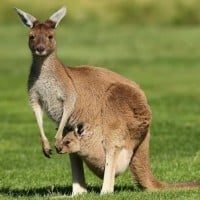 The kangaroo is a marsupial from the family Macropodidae. In common use the term is used to describe the largest species from this family, especially those of the genus Macropus: the red kangaroo, antilopine kangaroo, eastern grey kangaroo, and western grey kangaroo.
The kangaroo is a marsupial from the family Macropodidae. In common use the term is used to describe the largest species from this family, especially those of the genus Macropus: the red kangaroo, antilopine kangaroo, eastern grey kangaroo, and western grey kangaroo.
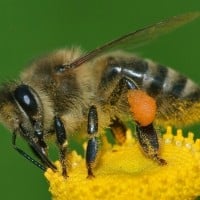
8/10 They are one of the most overhated animals on this planet. People hate them because they sting and freak out whenever they see one, but in reality they are one of the world's most important pollinators for food crops.
8/10 - I wish people would stop killing them just because they perceive them as harmful
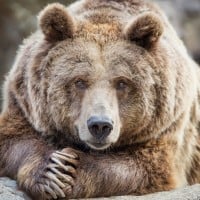 Bears are carnivoran mammals of the family Ursidae. They are classified as caniforms, or doglike carnivorans. Although only eight species of bears are extant, they are widespread, appearing in a wide variety of habitats throughout the Northern Hemisphere and partially in the Southern Hemisphere. Bears are found on the continents of North America, South America, Europe, and Asia. Common characteristics of modern bears include large bodies with stocky legs, long snouts, small rounded ears, shaggy hair, plantigrade paws with five nonretractile claws, and short tails. ...read more.
Bears are carnivoran mammals of the family Ursidae. They are classified as caniforms, or doglike carnivorans. Although only eight species of bears are extant, they are widespread, appearing in a wide variety of habitats throughout the Northern Hemisphere and partially in the Southern Hemisphere. Bears are found on the continents of North America, South America, Europe, and Asia. Common characteristics of modern bears include large bodies with stocky legs, long snouts, small rounded ears, shaggy hair, plantigrade paws with five nonretractile claws, and short tails. ...read more. Not really sure what to give them but I think it's interesting how there are only 8 species but they are so different from each other.
 The blobfish is a deep sea fish of the family Psychrolutidae. It inhabits the deep waters off the coasts of mainland Australia and Tasmania, as well as the waters of New Zealand.
The blobfish is a deep sea fish of the family Psychrolutidae. It inhabits the deep waters off the coasts of mainland Australia and Tasmania, as well as the waters of New Zealand. 7.5/10
Weird looking but cool!
4/10 ugly but unique
 The dog or domestic dog (Canis familiaris or Canis lupus familiaris) is a domesticated descendant of the wolf, and is characterized by an upturning tail. The dog is derived from an ancient, extinct wolf, and the modern wolf is the dog's nearest living relative. The dog was the first species to be domesticated, by hunter–gatherers over 15,000 years ago, before the development of agriculture. Due to their long association with humans, dogs have expanded to a large number of domestic individuals and gained the ability to thrive on a starch-rich diet that would be inadequate for other canids. ...read more.
The dog or domestic dog (Canis familiaris or Canis lupus familiaris) is a domesticated descendant of the wolf, and is characterized by an upturning tail. The dog is derived from an ancient, extinct wolf, and the modern wolf is the dog's nearest living relative. The dog was the first species to be domesticated, by hunter–gatherers over 15,000 years ago, before the development of agriculture. Due to their long association with humans, dogs have expanded to a large number of domestic individuals and gained the ability to thrive on a starch-rich diet that would be inadequate for other canids. ...read more. 3/10. Too overrated. They're annoying and gross. All they do is bark and drool and leave mounds of crap everywhere they go. Only good thing about them is that they have really good noses.
10/10 for the win! I'm too obsessed with them.
1 million/10 for Siberian huskies.
10/10
Adorable, cute, and funny

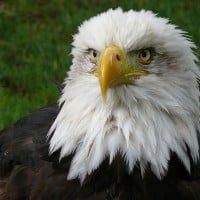 Eagle is the common name for many large birds of prey of the family Accipitridae. Eagles belong to several groups of genera, some of which are closely related. Most of the 60 species of eagle are from Eurasia and Africa. Outside this area, just 14 species can be found - 2 in North America, 9 in Central and South America, and 3 in Australia.
Eagles are not a natural group but denote essentially any kind of bird of prey large enough to hunt sizeable (about 50 cm long or more overall) vertebrates.
Eagles are also one of America's national symbols.
Eagle is the common name for many large birds of prey of the family Accipitridae. Eagles belong to several groups of genera, some of which are closely related. Most of the 60 species of eagle are from Eurasia and Africa. Outside this area, just 14 species can be found - 2 in North America, 9 in Central and South America, and 3 in Australia.
Eagles are not a natural group but denote essentially any kind of bird of prey large enough to hunt sizeable (about 50 cm long or more overall) vertebrates.
Eagles are also one of America's national symbols.
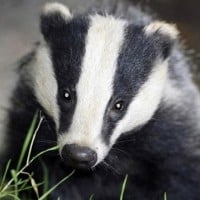 Badgers are short-legged omnivores in the family Mustelidae, which also includes the otters, polecats, weasels and wolverines.
Badgers are short-legged omnivores in the family Mustelidae, which also includes the otters, polecats, weasels and wolverines.
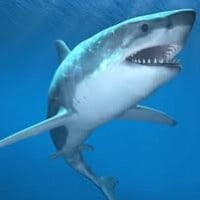 Sharks are a group of elasmobranch fish characterized by a cartilaginous skeleton, five to seven gill slits on the sides of the head, and pectoral fins that are not fused to the head. Modern sharks are classified within the clade Selachimorpha (or Selachii) and are the sister group to the rays. However, the term "shark" has also been (incorrectly) used to refer to extinct members of the subclass Elasmobranchii, which are technically outside the Selachimorpha clade. Notable examples of improper classification include Cladoselache, and various other members of the Chondrichthyes class like the holocephalid eugenedontidans.
Sharks are a group of elasmobranch fish characterized by a cartilaginous skeleton, five to seven gill slits on the sides of the head, and pectoral fins that are not fused to the head. Modern sharks are classified within the clade Selachimorpha (or Selachii) and are the sister group to the rays. However, the term "shark" has also been (incorrectly) used to refer to extinct members of the subclass Elasmobranchii, which are technically outside the Selachimorpha clade. Notable examples of improper classification include Cladoselache, and various other members of the Chondrichthyes class like the holocephalid eugenedontidans.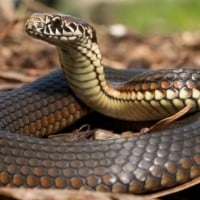 Snakes are elongated, limbless, carnivorous reptiles of the suborder Serpentes. Like all other squamates, snakes are ectothermic, amniote vertebrates covered in overlapping scales. Many species of snakes have skulls with several more joints than their lizard ancestors, enabling them to swallow prey much larger than their heads (cranial kinesis). To accommodate their narrow bodies, snakes' paired organs (such as kidneys) appear one in front of the other instead of side by side, and most have only one functional lung. Some species retain a pelvic girdle with a pair of vestigial claws on either side of the cloaca. Lizards have evolved elongate bodies without limbs or with greatly reduced limbs ...read more.
Snakes are elongated, limbless, carnivorous reptiles of the suborder Serpentes. Like all other squamates, snakes are ectothermic, amniote vertebrates covered in overlapping scales. Many species of snakes have skulls with several more joints than their lizard ancestors, enabling them to swallow prey much larger than their heads (cranial kinesis). To accommodate their narrow bodies, snakes' paired organs (such as kidneys) appear one in front of the other instead of side by side, and most have only one functional lung. Some species retain a pelvic girdle with a pair of vestigial claws on either side of the cloaca. Lizards have evolved elongate bodies without limbs or with greatly reduced limbs ...read more. 0/10 I hate them! They're creepy, gross, slimy, and don't have arms or legs! Just plain yuck!
9/10 I agree with blue frost
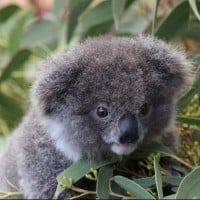 The koala is an arboreal herbivorous marsupial native to Australia. It is the only extant representative of the family Phascolarctidae and its closest living relatives are the wombats.
The koala is an arboreal herbivorous marsupial native to Australia. It is the only extant representative of the family Phascolarctidae and its closest living relatives are the wombats.
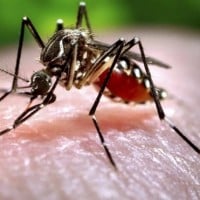 Spanish for "small fly," mosquitoes are insects that have been known to cause various diseases. A sample of diseases caused by mosquitoes: malaria, yellow fever, Chikungunya, West Nile virus, dengue fever, filariasis, Zika virus.
Spanish for "small fly," mosquitoes are insects that have been known to cause various diseases. A sample of diseases caused by mosquitoes: malaria, yellow fever, Chikungunya, West Nile virus, dengue fever, filariasis, Zika virus.
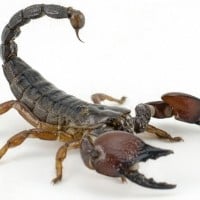
6/10 never really cared about them
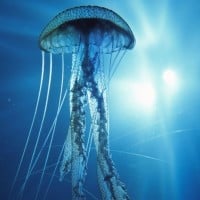
9/10. They can kill ANYTHING. There only weakness is beaches and turtles (which can still die).
 Swans are birds of the family Anatidae within the genus Cygnus. The swans' close relatives include the geese and ducks.
Swans are birds of the family Anatidae within the genus Cygnus. The swans' close relatives include the geese and ducks. 5/10 never really thought about it
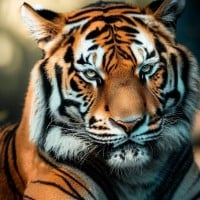 The tiger (Panthera tigris) is the largest living cat species and a member of the genus Panthera. It is most recognisable for its dark vertical stripes on orange fur with a white underside. An apex predator, it primarily preys on ungulates such as deer and wild boar. It is territorial and generally a solitary but social predator, requiring large contiguous areas of habitat, which support its requirements for prey and rearing of its offspring. Tiger cubs stay with their mother for about two years, then become independent and leave their mother's home range to establish their own. ...read more.
The tiger (Panthera tigris) is the largest living cat species and a member of the genus Panthera. It is most recognisable for its dark vertical stripes on orange fur with a white underside. An apex predator, it primarily preys on ungulates such as deer and wild boar. It is territorial and generally a solitary but social predator, requiring large contiguous areas of habitat, which support its requirements for prey and rearing of its offspring. Tiger cubs stay with their mother for about two years, then become independent and leave their mother's home range to establish their own. ...read more. 100/10 for white tigers
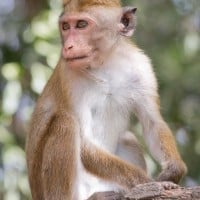 Monkeys are haplorhine primates, a paraphyletic group generally possessing tails and consisting of approximately 260 known living species.
Monkeys are haplorhine primates, a paraphyletic group generally possessing tails and consisting of approximately 260 known living species.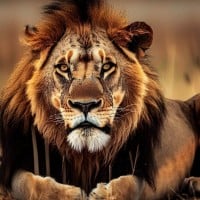 The lion (Panthera leo) is a large cat of the genus Panthera native to Africa and India. It has a muscular, broad-chested body, short, rounded head, round ears, and a hairy tuft at the end of its tail. It is sexually dimorphic; adult male lions are larger than females and have a prominent mane. It is a social species, forming groups called prides. A lion's pride consists of a few adult males, related females, and cubs. Groups of female lions usually hunt together, preying mostly on large ungulates. The lion is an apex and keystone predator; although some lions scavenge when opportunities occur and have been known to hunt humans, the species typically does not actively seek out and prey on humans. ...read more.
The lion (Panthera leo) is a large cat of the genus Panthera native to Africa and India. It has a muscular, broad-chested body, short, rounded head, round ears, and a hairy tuft at the end of its tail. It is sexually dimorphic; adult male lions are larger than females and have a prominent mane. It is a social species, forming groups called prides. A lion's pride consists of a few adult males, related females, and cubs. Groups of female lions usually hunt together, preying mostly on large ungulates. The lion is an apex and keystone predator; although some lions scavenge when opportunities occur and have been known to hunt humans, the species typically does not actively seek out and prey on humans. ...read more.